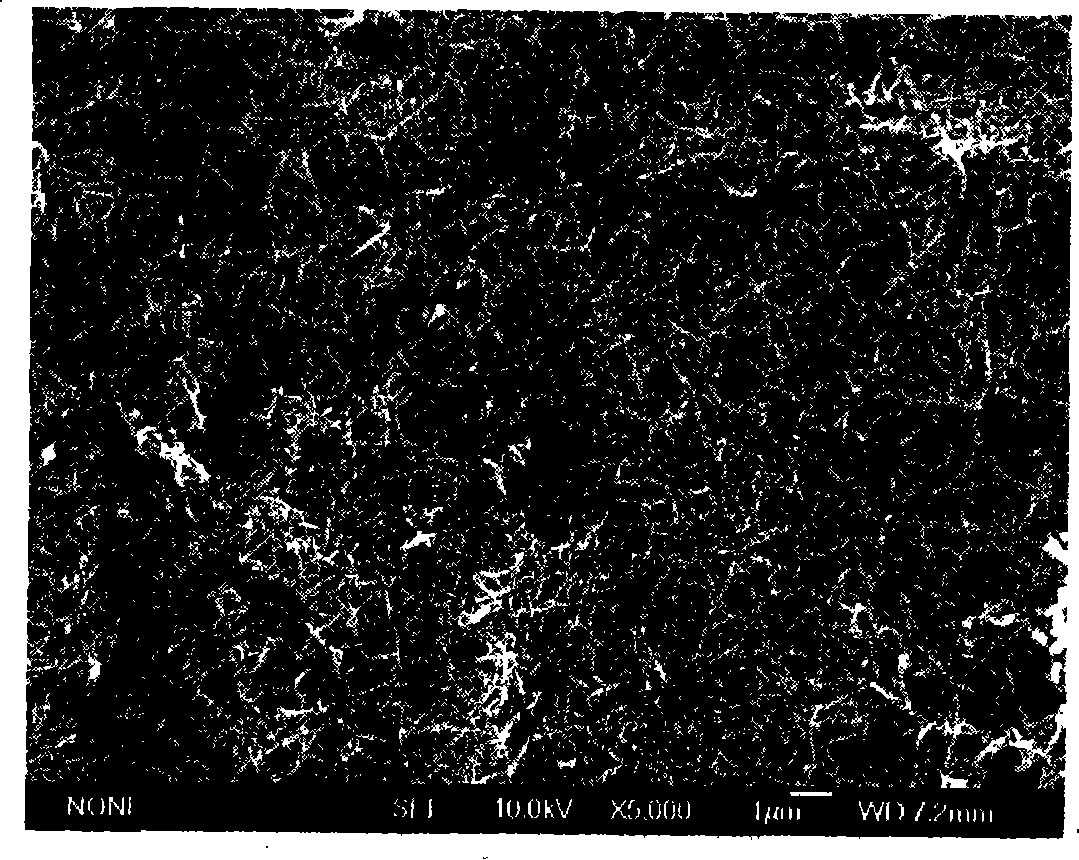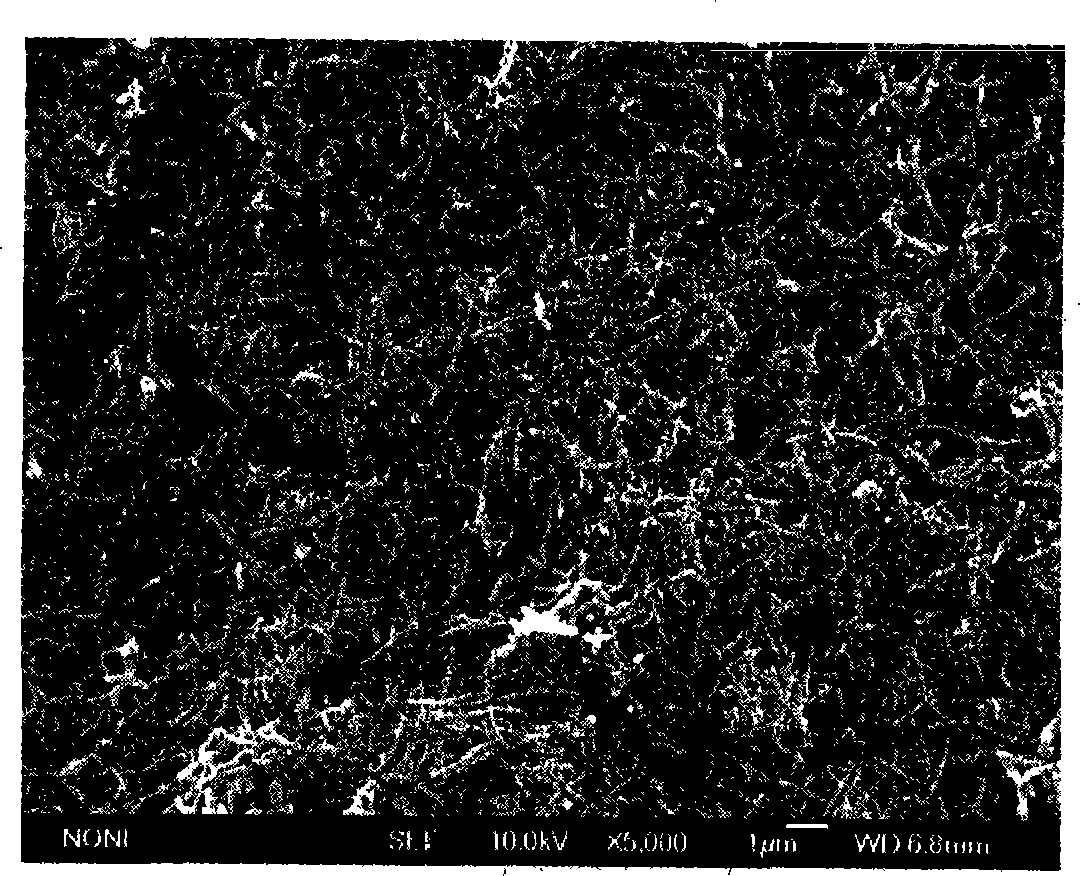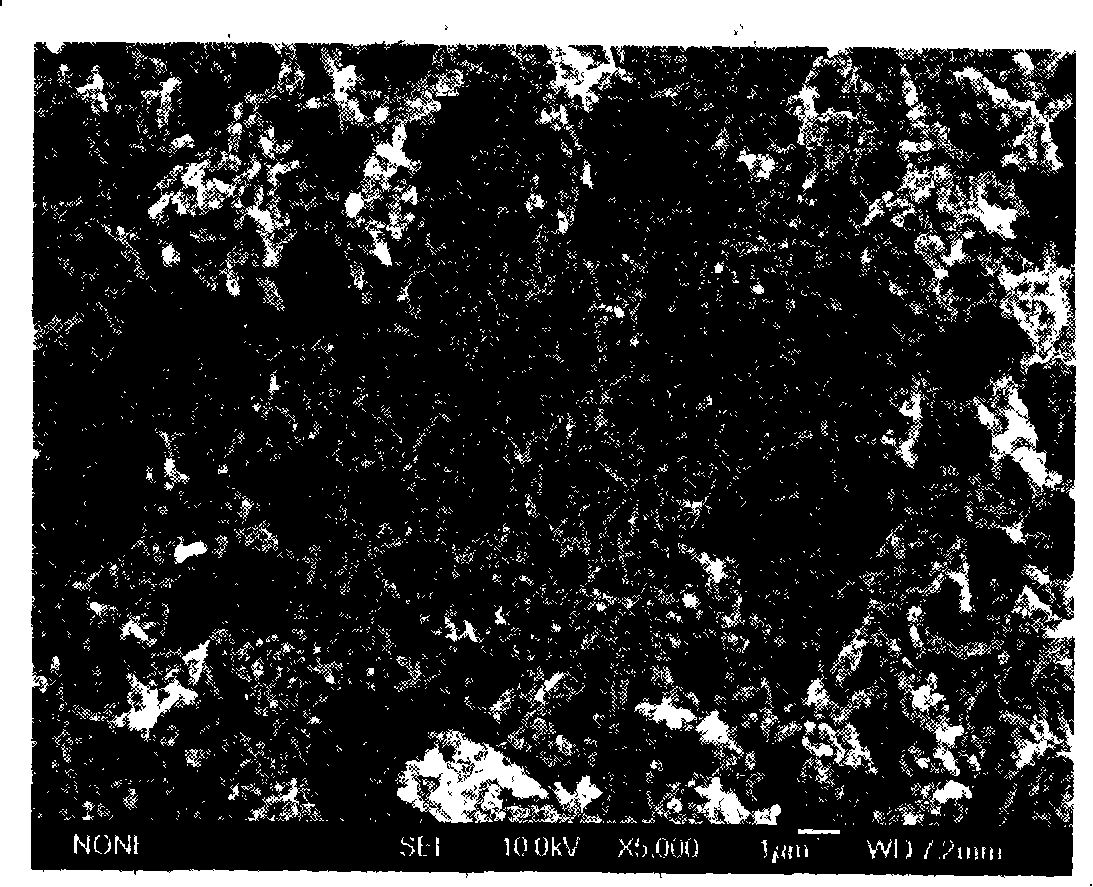Composite electrode and method for preparing high purity polyaniline nanometer line
A composite electrode, polyaniline technology, applied in capacitor electrodes, electrode shapes/types, circuits, etc., can solve the problems of low yield, low product purity, and low purity of polyaniline nanowires, and achieve simple process and high purity. Effect
- Summary
- Abstract
- Description
- Claims
- Application Information
AI Technical Summary
Problems solved by technology
Method used
Image
Examples
Embodiment 1
[0013] 0.629 g of polysulfone was dissolved in 6 mL of N,N-dimethylacetamide to obtain a N,N-dimethylacetamide solution containing 10% polysulfone. Then coat a film on the surface of the stainless steel electrode to control the thickness of the liquid film to 5 μm. Afterwards, the stainless steel electrode coated with polysulfone N, N-dimethylacetamide solution was quickly immersed in a coagulation bath (water) to complete phase inversion, and a polysulfone / stainless steel composite electrode was obtained. The polysulfone / stainless steel composite electrode was used as the working electrode, and another piece of stainless steel was used as the counter electrode. -1 Aniline and 1.00mol·L -1 Sulfuric acid was used as the electrolyte, and a cell voltage of 1.80V was used for electrolytic polymerization for 40 minutes to obtain polyaniline nanowires, the purity of which was 100%.
Embodiment 2
[0015] 1.415 g of polysulfone was dissolved in 6 mL of N,N-dimethylacetamide to obtain a N,N-dimethylacetamide solution containing 20% polysulfone. Then coat a film on the surface of the stainless steel electrode to control the thickness of the liquid film to 100 μm. Afterwards, the stainless steel electrode coated with polysulfone N, N-dimethylacetamide solution was quickly immersed in a coagulation bath (water) to complete phase inversion, and a polysulfone / stainless steel composite electrode was obtained. The polysulfone / stainless steel composite electrode was used as the working electrode, and another piece of stainless steel was used as the counter electrode. -1 Aniline and 1.00mol·L -1 Sulfuric acid was used as the electrolyte, and a cell voltage of 1.80V was used for electrolytic polymerization for 40 minutes to obtain polyaniline nanowires, the purity of which was 100%.
Embodiment 3
[0017] 2.425 g of polysulfone was dissolved in 6 mL of N,N-dimethylacetamide to obtain a N,N-dimethylacetamide solution containing 30% polysulfone. Then coat a film on the surface of the stainless steel electrode to control the thickness of the liquid film to 150 μm. Afterwards, the stainless steel electrode coated with polysulfone N, N-dimethylacetamide solution was quickly immersed in a coagulation bath (water) to complete phase inversion, and a polysulfone / stainless steel composite electrode was obtained. The polysulfone / stainless steel composite electrode was used as the working electrode, and another piece of stainless steel was used as the counter electrode. -1 Aniline and 1.00mol·L -1 Sulfuric acid was used as the electrolyte, and a cell voltage of 1.80V was used for electrolytic polymerization for 40 minutes to obtain polyaniline nanowires, the purity of which was 100%.
PUM
 Login to View More
Login to View More Abstract
Description
Claims
Application Information
 Login to View More
Login to View More - R&D
- Intellectual Property
- Life Sciences
- Materials
- Tech Scout
- Unparalleled Data Quality
- Higher Quality Content
- 60% Fewer Hallucinations
Browse by: Latest US Patents, China's latest patents, Technical Efficacy Thesaurus, Application Domain, Technology Topic, Popular Technical Reports.
© 2025 PatSnap. All rights reserved.Legal|Privacy policy|Modern Slavery Act Transparency Statement|Sitemap|About US| Contact US: help@patsnap.com



